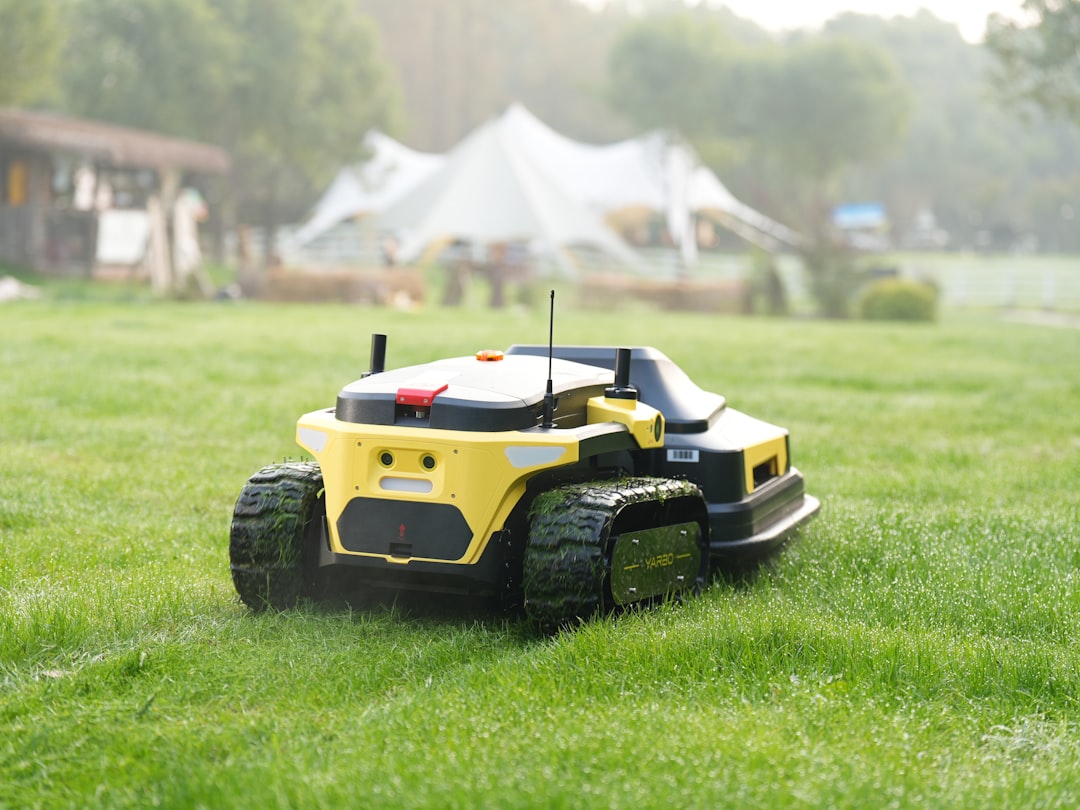Permanent Outdoor Lights Compared: GOVEE vs. LUMARY vs. EUFY
Permanent outdoor LED puck lights are transforming how homeowners approach seasonal lighting, architectural accenting, and year-round curb appeal.

Photo by Yarbo Global on Unsplash
This in-depth review examines the YARBO robotic lawn mower after several months of real-world testing across different turf types. The evaluation focuses on setup, reliability after long idle periods, cut quality, and how the system handles tight areas and obstacles. The unit was examined for practical home use: install complexity, app-based mapping, docking and wireless charging, and everyday behavior on a residential lot. Conclusions are drawn from multiple mowing cycles and configuration adjustments required to optimize performance.
The YARBO presents itself as a heavyweight contender in the consumer robot mower space with a rugged build and a wide cutting deck. Included accessories caught attention immediately—an Xbox-style physical controller and a robust front-mounted mowing attachment rated up to about four inches of cutting height. Fit and finish felt more like professional equipment than a typical consumer gadget, which bodes well for long-term durability. The initial takeaway was simple: this is designed for homeowners who want a powerful, capability-first robot rather than a tiny, narrow consumer unit.
Installation departs from the strictly wireless approach many expect: the system requires a wired Ethernet run from the exterior data center into an interior router or PoE adapter. That hardwiring supports the RTK antenna and other sensors used for precise navigation. Although running a CAT5/6 cable into the home may be inconvenient for some, the payoff was immediate—placement in a temporary pot with bricks produced a green status light and a stable connection without chasing open-sky views.
Mapping is performed via the mobile app, which draws paths in real time while the mower is driven to edges and perimeters. The physical controller paired but did not function reliably during testing, so the app became the primary interface for drawing working areas and no-go zones. Creating no-go zones is straightforward: the mower can be driven near the obstacle and the app used to trace a boundary, producing accurate exclusion areas that the mower respects during subsequent runs.
Once deployed, the YARBO immediately began cutting following calculated patterns visible on the app. The mower favored diagonal passes for coverage, and its long wheelbase led to noticeable maneuvering in tight corners. That wheelbase is a trade-off: it improves stability and allows a wider deck, but it requires attention when mapping small, confined sections. Adjustments such as selecting three-point turns or skid turns in settings helped reduce friction and turf wear in tighter spots.
Practical quirks surfaced during initial operation: a missing apparent "home" button in the app necessitated manual driving back to dock in one instance, and the physical controller remained largely unused due to inconsistent functionality. Despite these early hiccups, the cutting performance delivered clear, even stripes and consistent perimeter behavior once parameters were dialed in.
A standout capability is the wireless charging pad and reliable memory retention after long idle periods. After weeks of sitting while new sod established, the mower powered up from its wireless charging pad and remembered previously mapped areas without reconfiguration. This demonstrates robust onboard mapping retention compared to other units that can lose maps after short downtimes.
Routine operation showed dependable behavior: perimeter cuts, interior mowing passes, and automatic return-to-dock completed with minimal intervention. The system also offers advanced features in development—onboard cameras accessible while parked, and future attachments such as a blower or snowblower—indicating a platform approach rather than a single-season appliance.
Cut quality is competitive for a robotic solution, with a wider deck that reduces the total number of passes on larger lawns. However, it does not match the finish of a traditional mower that uses suction and mulching discharge; the YARBO relies on high-speed spinning blades under the chassis rather than vacuum-assisted collection. For homeowners seeking a near-perfect finish for show lawns, a conventional mower may still be preferable for occasional touch-ups.
On St. Augustine turf specifically, the mower performed well at a three-inch setting, though the grass had previously been maintained lower than that. Results were acceptable and consistent, but the mower’s turning and wheelbase characteristics make it best suited to medium-to-large lawns where tight maneuvering is less frequent. Collisions and bump detection occurred occasionally, but the unit recovered and continued its program without getting stuck.
The YARBO robotic lawn mower stands out as a potent, work-oriented option for homeowners seeking a durable robot that actually completes its tasks reliably. It is especially well-suited to larger yards where its wider deck and purposeful travel speed reduce overall runtime while maintaining consistent coverage. Installation requires a wired data center and some setup patience, but the system rewards that effort with dependable mapping retention, wireless docking, and solid mowing performance over time. For those willing to trade a pristine, vacuum-assisted finish for hands-off, frequent maintenance, the YARBO is a strong contender that gets the job done.
Is the YARBO robotic mower suitable for St. Augustine grass?
Yes. The mower handled St. Augustine adequately when set to an appropriate blade height (around 3 inches in testing). St. Augustine’s broader blades can be more challenging, but the YARBO’s wider deck and trimming pattern delivered consistent results when configured correctly. For the best appearance, occasional touch-ups with a conventional mower can complement the robot’s ongoing maintenance.
Does the system require running cable into the house?
Yes. The YARBO uses a wired data center requiring a CAT5/CAT6 run into a router or PoE adapter inside the home to support RTK and stable communications. While this adds an installation step that some homeowners may dislike, it contributed to immediate, stable satellite/RTK connectivity during testing.
Is the wireless charging reliable?
Wireless charging proved reliable in extended tests. The mower docked on a wireless pad and maintained charge readiness even after weeks of inactivity, retaining mapping and settings without needing a re-run of configuration routines.
How loud is the YARBO during operation?
The unit is considerably quieter than a conventional gas mower; aside from some mechanical squeal, operation is subdued enough to run during early morning or late evening hours without significant neighborhood disturbance.
Can the included physical controller replace the app?
During the evaluation the physical Xbox-style controller paired but did not function as expected and was therefore not relied upon. The app provided complete mapping and control functions, so buyers should expect the app to be the primary interface and consider the physical controller an optional accessory pending firmware updates.
Access all your saved properties, searches, notes and more.
Access all your saved properties, searches, notes and more.
Enter your email address and we will send you a link to change your password.


Your trusted MLS search companion